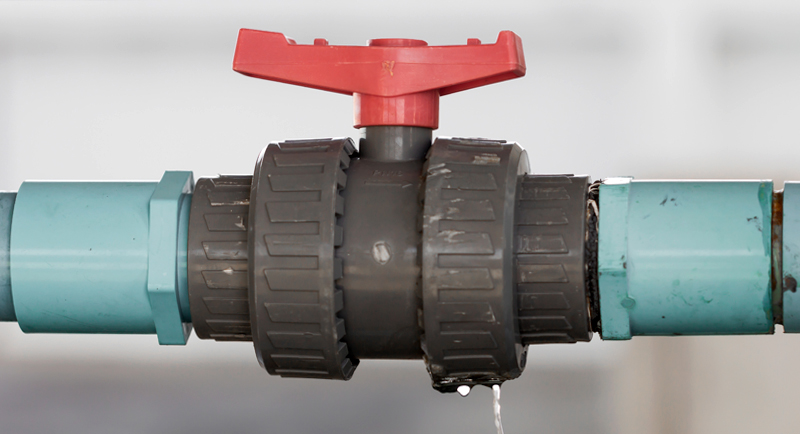The Total Productive Maintenance (TPM) environment is based on cooperation, collaboration and communication.
These 3C’s add up to one very powerful partnership. Through our years’ of TPM implementation experience, we’ve learned first-hand how the Pillars of TPM work systematically to bring technical and cultural change to your organization. Here’s a quick summary…
Autonomous Maintenance (AM)-
In a TPM environment the process owners’ role is to prevent or control deterioration. This is accomplished by having process owners take responsibility for the routine maintenance of the production equipment thus eliminating the days of “I operate it/you fix it”.
Activities performed include cleaning, inspecting, lubricating and establishing provisional standards for each. As the initial steps of Autonomous Maintenance become routine, skill development and training sessions are established to teach process owners about machine sub-systems. Overtime, these activities become part of the production process owners’ daily work.
Maintenance Improvement (MI)
With the basic Autonomous Maintenance routines established and being carried out by the process owners, maintenance technicians focus on planned, preventive and predictive maintenance, and stores management.
They spend time nurturing and enhancing production process ownership and teach process owners the routine maintenance operations for all machine sub-systems. As the Total Productive Maintenance (TPM) effort continues to mature, maintenance techs will also work with quality and engineering on zero defects, design for maintainability projects and new equipment design/install.
Training and Skills Development
Underpinning all of TPM’s technical improvements is a robust training and skill development effort. This is vital as operators and maintenance techs must have the skills to carry out all of the required TPM activities, including the ability to judge normal and abnormal conditions and strictly enforce condition management rules.
In addition to these skills, training in culture/social skill development, such as, lessons on teaming and team-based problem solving, are vital to functioning in a robust team-based environment. When developing your training effort, keep focused on the types of skills you want coming out of the effort and remember to keep sight of individual’s needs.
Focused Improvement (FI)
Concurrent with the Autonomous Maintenance and Maintenance Improvement efforts, production process owners and maintenance techs also work in partnership to understand and correct targeted/chronic losses thru Focused Improvement activities.
These cross-functional teams continuously investigate, test, and implement improvements with the goal of maximizing equipment effectiveness. The lessons learned are applied to new equipment design and build as well as existing equipment redesign and rebuild thru Early Equipment Management and Maintenance Prevention Design.
Quality Maintenance (QM)
With the first 4 TPM Pillars (Autonomous Maintenance, Maintenance Improvement, Focused Improvement and Training and Skills Development) in place and taking hold, the TPM effort begins to focus on Quality Maintenance and achieving zero defects.
Like safety, quality is everyone’s responsibility. In the TPM environment, it is understood that the key to zero defects resides closest to where the product is being made. As such, quality managers, engineers, maintenance techs and process owners work together using root-cause problem solving techniques to analyze defects so steps can be taken to eliminate the defect from reoccurring.
Early Equipment Management (EEM), Maintenance Prevention Design (MPD)
Throughout the Total Productive Maintenance (TPM) implementation, engineering plays a key role. From working with production process owners to make machine modifications that enable easy cleaning and inspection to working with quality and maintenance on modifications to eliminate quality defects, it is the role of engineering to ensure machine standards evolve to support the effort.
Engineering also works with various stakeholders to ensure that new equipment goes into production in a “TPM state of readiness” thus ensuring optimal performance is reached earlier than is ‘normal’ and quality output is achieved from the first production day. To make all of this happen, engineers should spend approximately 50% of their time in the workplace.
Environment Health and Safety
Safety and sustainability are key organizational tenets, and it’s no surprise that TPM is an enabler to both. This is why the Environment, Health, and Safety Pillar is a key element in the TPM Process.
TPM’s focus on improving equipment reliability, preventing human error, and eliminating accidents remove common workplace dangers while simultaneously reducing material waste, power and water usage, and noise pollution!
Office TPM
With TPM activities being a carried out in the production area, it is the administrative departments’ responsibility to process information, advise on, and assist production and maintenance to help reduce cost.
Additionally, administrative staff should continually examine and eliminate waste from their administrative value streams to help shorten lead-times and, in turn, time to market. The TPM process must be embraced by the entire organization.
At Productivity, we know TPM!
We’ve conducted assessments, drafted implementation plans (rollouts), trained managers and employees, coached leadership teams, implemented TPM pillars, and developed sustainment routines that ensure long-term success. And, we’ve done this for organizations large and small in all industry sectors.
We’ve witnessed first-hand the positive returns TPM can bring to an organization. Give us a call, we can help you get a TPM effort started (or reinvigorated) in your organization; ROI can start to be realized quickly and typical returns for a full TPM Rollout are multiple times our fees!


